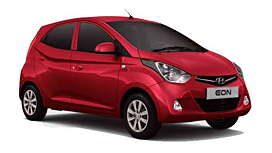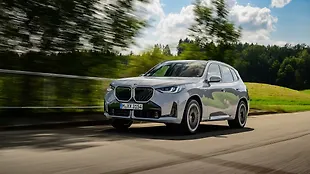What is it?

The Hyundai Eon is the entry-level vehicle from the South Korean automaker. When the car was launched in 2011, much was spoken about its good looks and feature- loaded cabin. But, the three-cylinder 800cc engine wasn’t enough to take on the sportier Maruti Suzuki Alto K10. In 2014, Hyundai addressed this by introducing the 1.0-litre engined Eon. It bears the same design and feature list, but with the advantage of more power!
How is it on the inside?

Hyundai cars have always been known for being feature- heavy in their respective segments and this one is no different. The variant we tested was the Magna+ (O). It gets a 2-DIN music system with AUX, USB and iPod compatibility. The seats are two-tone with the ones at the front getting good side bolstering.

The dashboard is a combination of black and beige and it gets a cubbyhole above the glovebox as well. Everything falls easily to hand and the fit and finish is good for the price. The rear seating, however, is only good for two people, though.
The front visibility from the driver’ seat is not all that great thanks to the sloping bonnet. However, this is not much of an issue as the dinky dimensions of the car and good view from the sides make it quite easy to manoeuvre in tight situations.

While the feature list may have been outstanding when the car was launched, its major rival, the Maruti Suzuki Alto K10 (which was facelifted last year) has now caught up and offers similar levels of equipment. However, the Alto K10 feels low-rent and the inside looks cheaper compared to the Eon.
How does it drive?

This version of the Hyundai Eon is powered by a 1.0-litre three-cylinder petrol mill producing 68bhp and 94Nm. Power is sent to the front wheels via a five-speed manual. The engine is punchy and has sufficient low-end grunt to keep a balance between heavy bumper-to-bumper driving as well as on the highway.

The gearing is well sorted too and it only helps make the Eon less tiresome to drive in traffic. Moreover, the Eon 1.0 has an ARAI fuel efficiency of 20.3kmpl, which isn’t bad either.
The ride quality on the Eon is pliant. It is comfortable and absorbs most imperfections on the road without sending a rude shock but yes, show it a large pot hole and bump, and the Eon’s budget origins come to the fore.

It doesn’t have the travel or suppleness, of say the Renault Kwid but, the Hyundai has the better steering. The Eon’s steering is still light and devoid of feedback, but it won’t leave you feeling nervous, especially at higher speeds on the highway.
Why should I buy one?

We would recommend the Hyundai Eon for its ride, looks, and build quality because the Maruti Suzuki Alto K10 – its largest rival (in terms of sales numbers) – matches the Hyundai on other counts like features and specifications.

And as an added advantage, the K10 is cheaper too. But, Hyundai’s ace is its warranty. We know for any first time car buyer nothing conveys hassle free ownership as well as a strong warranty, and on this count with 2 years/unlimited warranty compared to Alto K10’s 2 years/40,000km, the Eon makes great sense.
Where does it fit in?

The Hyundai Eon 1.0-litre competes with the Maruti Suzuki Alto K10 as well as the Datsun Go hatchback in the A-segment of the Indian car market. The Chevrolet Spark could also been seen as a worthy alternative.
Photos: Kapil Angane

































